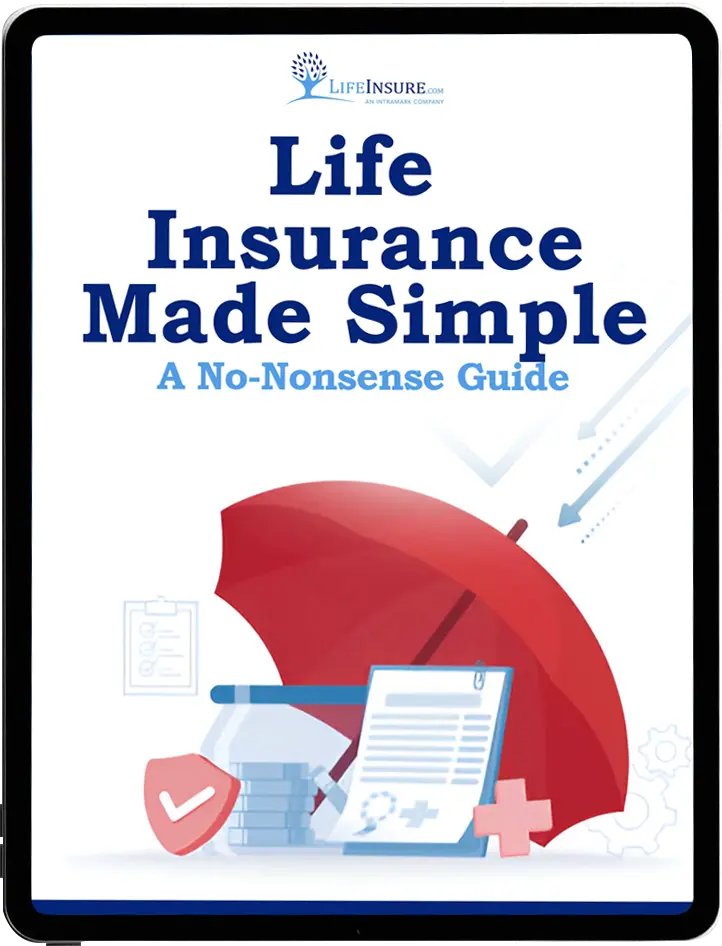Term Life Insurance Quotes
Life Insurance rating classifications are based on one’s medical history and the medical exam results (if one is taken). An insurance company will make an offer (or occasionally decline to make an offer) that reflects its guidelines for a rating class.
Easy Article Navigation
- Life Insurance Rating Classifications
- Requirements for the Best Rating Class
- Standard, Non-Tobacco, and Tobacco
- Extra Rate or Table Rating
- Frequently Asked Questions
Each insurance company is somewhat different. They differ in their classifications’ names and the requirements to qualify for a rating class. The classifications also vary between term life insurance and whole life plans, especially in the extra rating categories. Much of the content of these definitions comes directly from major life insurance company rating guides. The following can give you some guidelines.
Life Insurance Rating Classifications
Life insurance rating classifications are categories that insurance companies use to decide how risky it is to give someone a life insurance policy. These categories help set the cost of the insurance for the person who’s buying it. Different companies might have slightly different names for these categories, but the main ones are:
- Preferred Plus: This category is for people who are very healthy and have a good weight for their height. They don’t smoke or use tobacco, don’t have serious health problems in their family, and don’t have any big health issues themselves. These people are considered the least risky, so they get the best insurance prices.
- Preferred: People in this category are also pretty healthy, but they might not be as perfect as those in the Preferred Plus group. They might have a bit higher weight for their height, some health issues in their family, or a few small health problems. They still get good prices for insurance.
- Standard Plus: These people are healthy, but they might have more health problems or a not-so-great family health history compared to those in the Preferred group. They might weigh a little more for their height, too. Their insurance prices are a bit higher than those in the Preferred group.
- Standard: Standard people are average in health and have a normal weight for their height. They might have some health problems or a family history of health issues. The cost of their insurance is higher than the prices for the Preferred or Standard Plus groups.
- Substandard: People in this category have more health problems, weigh more for their height, or have a more complicated family health history. Insurance companies give them a rating that shows how risky they are, and this rating affects their insurance prices. People in this group pay more for their insurance because they’re riskier.
- Tobacco/Nicotine User: This category is for people who smoke or use other tobacco products. They usually have to pay more for insurance because using tobacco can lead to health problems. Tobacco users can be put into different groups like Preferred Tobacco, Standard Tobacco, or Substandard Tobacco, depending on their health and risk.
Requirements for the Best Rating Class
Here are some of the general requirements for the best class (super preferred, preferred plus, etc.):
- No family history (parent or sibling) of death from cancer or heart disease before age 60 (some companies use age 65)
- No tobacco use for five years (some companies have three years)
- Blood pressure 130/80 or less
- Cholesterol (total) 200 or less
- No cancer or cardiovascular disease history
- No DWI or more than 2 moving violations in three years
- Meets the company height-weight requirements
In the next category, commonly called preferred, the requirements become somewhat more liberal such as:
- No more than one death of a sibling or parent before age 60
- No tobacco use for three or five years (depending on the company). Some may allow mild cigar or chewing tobacco use at
this rating class. - The height-weight ratio is liberalized
- The total cholesterol limit is liberalized to up to 230 or 240
- The other health history areas are still in place
Standard (Non-Tobacco and Tobacco)
Below the preferred categories are what’s called standard. With some companies, standard is also the category for those who use tobacco. Some companies differentiate between cigarette and cigar smoking and chewing tobacco by not adding the same rate increase for the cigar or tobacco chewer as for a cigarette smoker. This is further complicated because some life insurance companies have preferred and standard tobacco rates.
Each insurance company might have its own way of deciding which category someone belongs to, and the prices can be different between companies. That’s why it’s a good idea to look at different companies and compare their prices before choosing one.
The bottom line: Shop! It’s not only the quoted rate. It’s what you can get as an offer. Two companies (or more) could give you the same rating class, say Super Preferred (Preferred Plus), but you can’t qualify for one but might for the other! On the Lifeinsure.com quoting engine, Company A may quote you $950 per year for Preferred Plus and Company B $1050, but you can’t qualify for Company A! An experienced online broker can help you choose.
What does Table Rating or Extra Rate Mean?
Table rating in life insurance is a way for insurance companies to determine the cost of life insurance for people who have a higher risk due to their health, lifestyle, or other factors. These people might not fit into the standard categories like Preferred or Standard, so they are given a “table rating” instead.
A table rating is like a grading system, where each level of the table represents a higher risk and a higher cost for life insurance. The table usually uses letters (A, B, C, etc.) or numbers (1, 2, 3, etc.) to show the different levels. For example, someone with a table rating of “A” or “1” would have a slightly higher risk and pay a little more for their insurance, while someone with a table rating of “E” or “5” would have a much higher risk and pay a lot more for their insurance.
For example, a table rating of 1 will generally add 25% to the standard rate, whereas a table rating of 5 will add 125% to the standard rate.
The specific table rating system and the factors that determine a person’s rating can be different between insurance companies. That’s why it’s important to compare prices from different companies before choosing a life insurance policy, especially if you have a higher risk due to health issues or other factors.
Here’s where shopping with a good insurance agency with multiple companies becomes imperative. When you get below standard rates because of medical history or other histories, you might be offered what is called a Table Rating. These are policies that are higher risk for the insurance company. Rated policies are rated according to a table, and the extra premium is sometimes called a “Table rating.”
Extra tables go from 1 to 16 (or higher). Not every company goes to 16. Some companies will only rate term life insurance a certain amount and then, above that, decline to offer insurance. Some life insurance companies use an equivalent letter system, as in Table B (equivalent to Table 2) or Table F (Table 6). Each table is a 25% increase in the term insurance rate, so Table 2 would be 50% more than the Standard rate, Table 4 would be 100% higher, etc.
Finally, table ratings for whole life insurance are not quite as drastic. Since these policies are a combination of cash and risk, only the cost of the risk is affected by the extra rating, so the additional premium for the policy does not rise at even 25% per table as in term life insurance.
Frequently Asked Questions
While it is not guaranteed, many insurers allow policyholders to request a reevaluation of their rating classification after a certain period (usually 1-2 years) if they have experienced significant improvements in their health or lifestyle. If the insurer agrees, the policyholder’s premiums may be adjusted accordingly.
Life insurance rating classifications are categories assigned by insurance companies to assess the risk level of an applicant. These classifications help determine the premium rates for a specific individual based on factors such as age, health, lifestyle, and occupation.
Insurers evaluate an applicant’s risk level by reviewing their medical history, lifestyle choices, occupation, and family health history. This information is gathered through a process called underwriting, which may involve a medical exam, a review of medical records, and personal interviews.
Yes, individuals can improve their rating classification by adopting healthier lifestyle choices, such as quitting smoking, maintaining a healthy weight, exercising regularly, and managing chronic medical conditions. It’s essential to note that changes in lifestyle may not immediately result in an improved rating, as insurers typically require a sustained period of improved health.
The higher the risk associated with an applicant, the higher the premium rates they will pay. Applicants in the Preferred Plus category usually receive the lowest premium rates, while those in the Substandard category pay the highest premiums. Standard classifications fall in between.
For more information about how life insurance rating classifications are determined or to get a free, no-obligation quote, call the insurance professionals at LifeInsure.com at 866-868-0099.
Term Life Insurance Quotes
Last Updated on August 29, 2024 by Richard Reich


